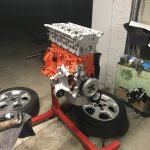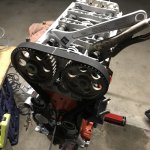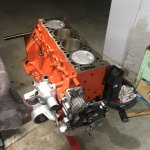So what are my options here gents... Trying to get this done by the end of the month and trying my best to be patient...
I searched the glyco catalogue (below - highlighted in yellow) and they say .100 is within spec... just, but feel kinda sketchy about running a rebuild at the limit of the spec.
OPTION A - Run it, and face what consequences?
OPTION B - Get the undersized .30mm, and have to the crank grinded to suit, correct? What will that set me back.

I searched the glyco catalogue (below - highlighted in yellow) and they say .100 is within spec... just, but feel kinda sketchy about running a rebuild at the limit of the spec.
OPTION A - Run it, and face what consequences?
OPTION B - Get the undersized .30mm, and have to the crank grinded to suit, correct? What will that set me back.



